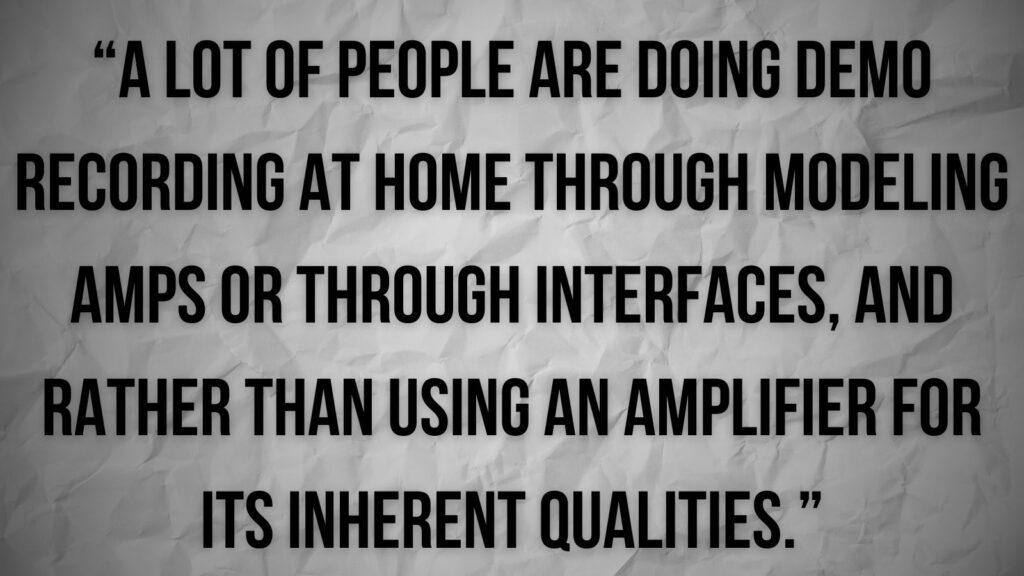Producer Steve Albini, well-known for his work with Nirvana on their final album “In Utero,” discussed the trends with guitar pedals and their role in the tone-shaping process.
The abundance of choice in the guitar world feels like both a blessing and a curse. While you have options to choose anything that comes to mind, you may also fall into the trap of tweaking your tone so much that you’ll get distracted from actually making music. That, or just obsessing with unnoticeable textures in your tone that no listener will really care about.
For Steve Albini, who’s also a guitar player himself, his setup is pretty straightforward. But speaking to Premier Guitar in a recent interview, he pointed out that there’s no exact solution to anyone’s sonic equation. You may have a few, or you may have a super complex elaborate rig — it’s just about knowing what to do with your gear.
When asked to weigh in on the modern pedal technology as someone who prefers a smaller setup, Albini replied:
“The stage that we are at now, where every player in every band has a pedalboard and have this sort of a curated collection of sounds that they come up with — I actually got a preview of that in the late ’80s.”
“The first time I went to Japan, most guitarists that I worked with had a pedalboard with half a dozen pedals on it, and that’s how they would craft their sound. They could bring that anywhere and plug it into any amp, and they’d be happy.”
This is, in a way, something that he’s seeing today in the West. The game, of course, has changed with amp modelers. But the principle of having the core of your tone in some form of a floor-based setup remains the same. And, more importantly, it “defeats” the point of having an amp. He continued:
“Something very similar is happening now in the US where a lot of people are doing demo recording at home through modeling amps or through interfaces, and rather than using an amplifier for its inherent qualities, they’re kind of defeating the amplifier by using pedals as the principal source of their sound.”
On the other hand, he seems indifferent to it. “It’s a trend,” Albini added. “I don’t really have an opinion about it.”

Nonetheless, the love for having elaborate pedalboards is still very much present these days. While this is not his personal preference, Steve loves the fact that people care about having this detail-oriented approach where specific pedals do their parts in specific songs. He continued:
“There are some people who are more adept at it than others, but it’s absolutely the case that most players in most bands now have multiple pedals that they’re using, and the songs are arranged in a way where you use this combination for this part and this combination for this part.”
“And nothing about it seems bad to me,” Albini pointed out. “It’s a little more cumbersome, especially when you’re in the studio, and you’re trying to track down problems.”
Speaking on the matter, the producer also added how it’s awesome to see “someone who’s really put some thought and attention into it and they’re really using the pedals in an expressive way.” For this, he had one particular name to share:
“I did a session with Reba Myers from Code Orange. She has this really expansive pedal setup where she’s got a main soundboard where the general tone for a given song comes from, and then she’s got a kind of an expression board, which is just all the crazy sh*t, and she’s constantly going back and forth.”
And here’s the most important part — Reba used her setup as a creative tool. This was more than just a fun-looking collection of shiny devices that do fun-sounding stuff. It actually served its purpose. He continued:
“She’s an example of someone who’s put a lot of thought and attention into the specifics of the pedalboard and is using it as a creative tool. I’ve seen other people where it’s kind of pro forma. Like, Kiss wore funny outfits on stage, and so for a while, a lot of bands felt obliged to wear funny outfits on stage.”
And then there’s what Albini refers to as the “boomer” mentality where, if you can’t perform your music with the minimal setup, that means that you’re not good enough. Despite being someone with a simpler rig, he’s absolutely against that:
“I know some old-school guys are like, ‘Plug the guitar straight into the amp, and if you can’t get it done with that, you’re not a real musician,’ or whatever. That’s horse sh*t. That’s just boomer sh*t. I’m not into that at all.”
Photos: Alex Regan (Eventide Timefactor on Pedal Board, Recording Heartlyn Rae, Parametric Studios)


